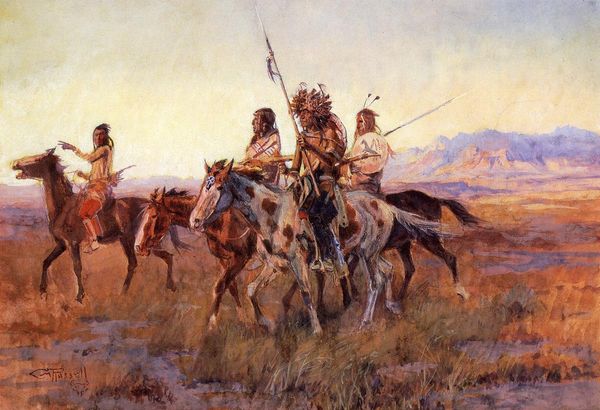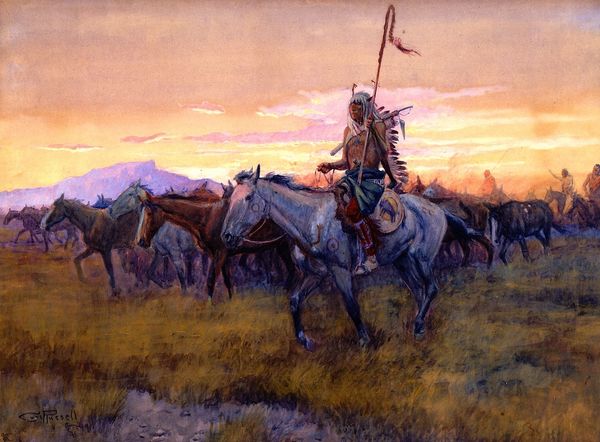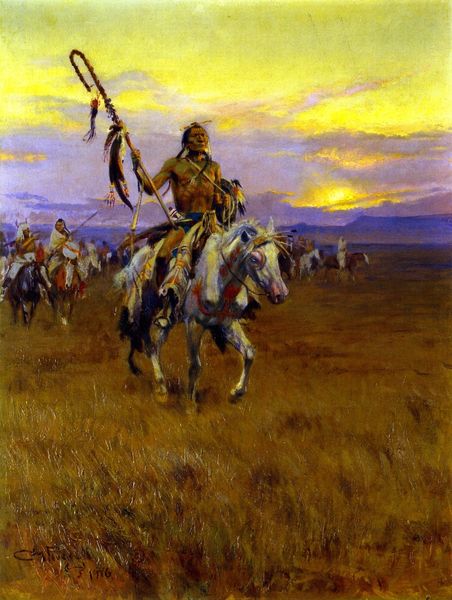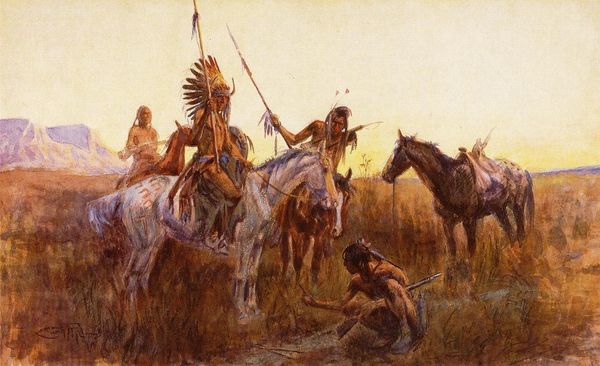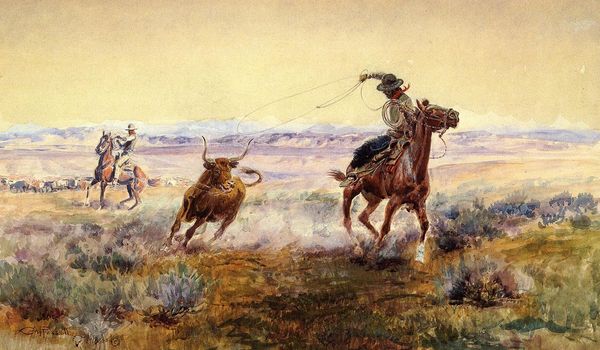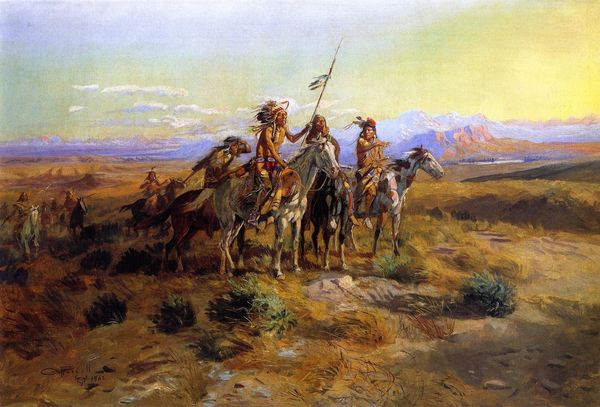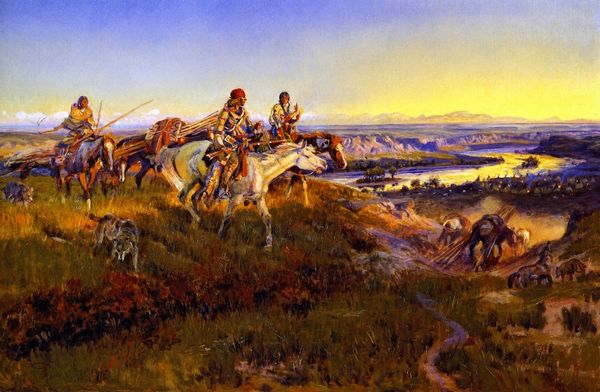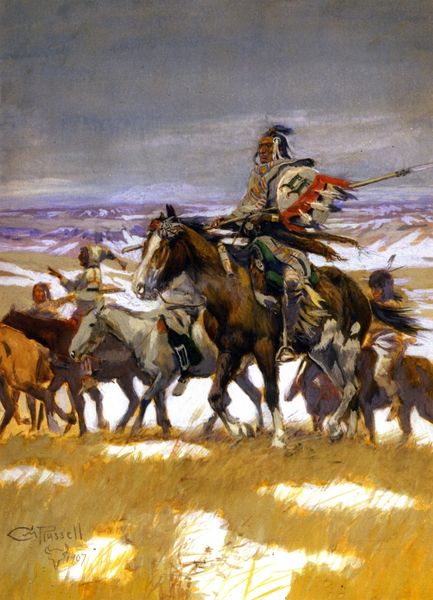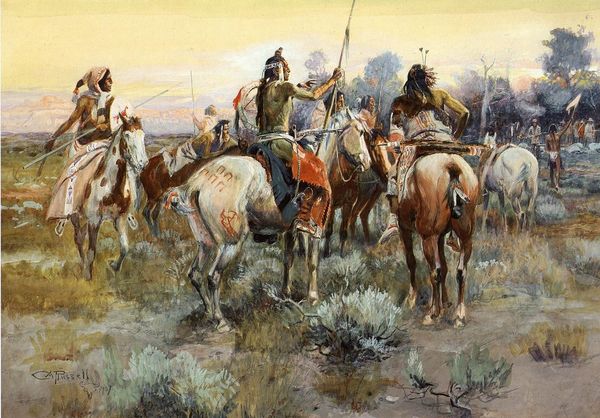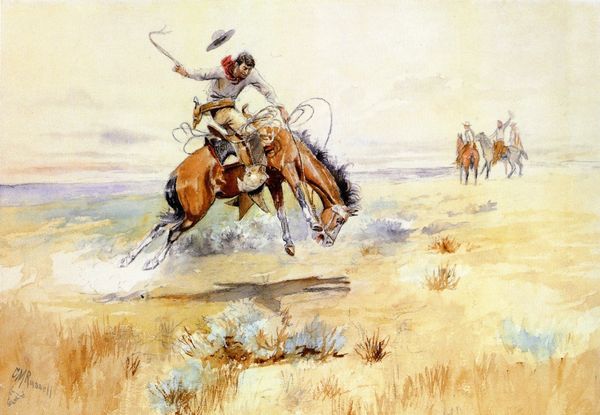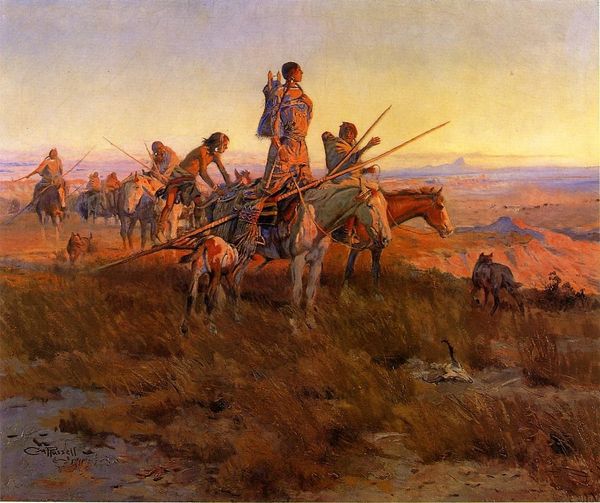![The Medicine Man [No. 2] by Charles M. Russell](/_next/image?url=https%3A%2F%2Fd2w8kbdekdi1gv.cloudfront.net%2FeyJidWNrZXQiOiAiYXJ0ZXJhLWltYWdlcy1idWNrZXQiLCAia2V5IjogImFydHdvcmtzLzViMzE2MzM5LWJlN2MtNDVmYi1iYzU4LWY3ZGRhNDNmYzdmYS81YjMxNjMzOS1iZTdjLTQ1ZmItYmM1OC1mN2RkYTQzZmM3ZmFfZnVsbC5qcGciLCAiZWRpdHMiOiB7InJlc2l6ZSI6IHsid2lkdGgiOiAxOTIwLCAiaGVpZ2h0IjogMTkyMCwgImZpdCI6ICJpbnNpZGUifX19&w=3840&q=75)
painting, oil-paint
#
painting
#
oil-paint
#
landscape
#
figuration
Copyright: Public domain
Curator: Charles M. Russell painted "The Medicine Man [No. 2]" in 1908, a compelling oil on canvas portraying a historical genre scene among Indigenous Americans. Editor: My initial impression is that the color palette creates a dusty, somewhat muted landscape. The composition seems very deliberate, with the figures and horses arranged to guide your eye across the horizontal expanse. Curator: Indeed. Russell was deeply invested in documenting what he saw as a vanishing way of life. His romantic vision was also inevitably shaped by his outsider perspective on Indigenous cultures of the time. Note the titular figure leading the group, placed centrally with great emphasis in his dress. The piece romanticizes the role of the "Medicine Man" as the main character, in a potentially stereotyped way, a powerful and sage leader within his community, yet perpetuates some misconceptions about Indigenous spiritual practices. Editor: Yes, there’s a very definite layering to the painting – the figures in the immediate foreground, particularly the lead horse and rider, are rendered with greater detail compared to those receding into the distance, reinforcing the perspective and contributing to the illusion of depth, don't you think? How much of this imagery was constructed, as opposed to observed? Curator: That is hard to ascertain. Russell certainly lived amongst Indigenous communities, absorbing their culture. However, paintings like these were also produced for a burgeoning market fascinated by the “Wild West”. So they were made for specific buyers. We should note here, that although not a Western trope, this theme echoes the historical painting of its time, showing Indigenous people participating in grand narratives as subjects on horseback, evoking classical heroes. Editor: The application of oil paint also bears scrutiny. Notice the varied textures; thicker impasto for the figures contrasting with the smoother gradients in the sky, and especially how the blending of colors is masterfully done. It allows light to both define and dissolve the forms. Curator: Absolutely, the visual spectacle also bolstered certain ideas about frontier life and its heroes in service of commercial or personal goals. The "Medicine Man" here acts almost as an emissary into that world of historical documentation for posterity, carefully placed and staged for our visual consumption and entertainment. Editor: Ultimately, examining this painting encourages us to think about how artists blend aesthetics, ideology and popular markets. The textures alone invite the viewer closer to its historic reality. Curator: Precisely. Thinking critically about art from earlier periods means confronting the historical biases and narratives they propagate.
Comments
No comments
Be the first to comment and join the conversation on the ultimate creative platform.
